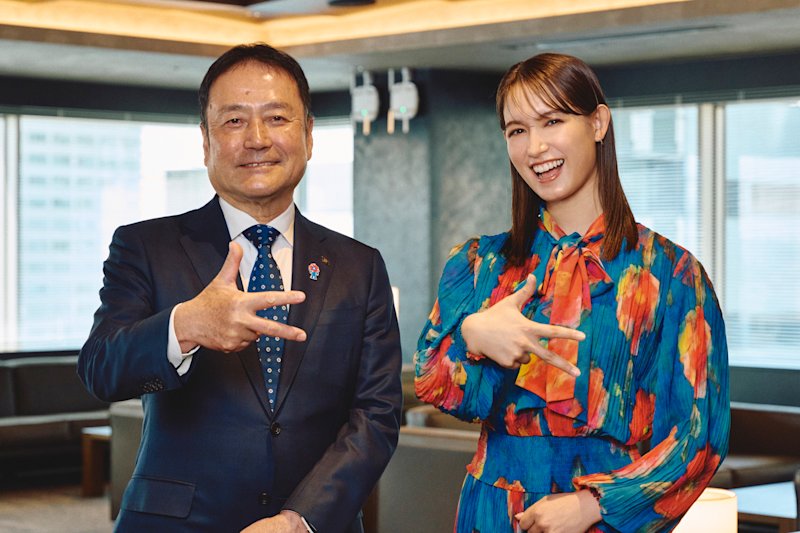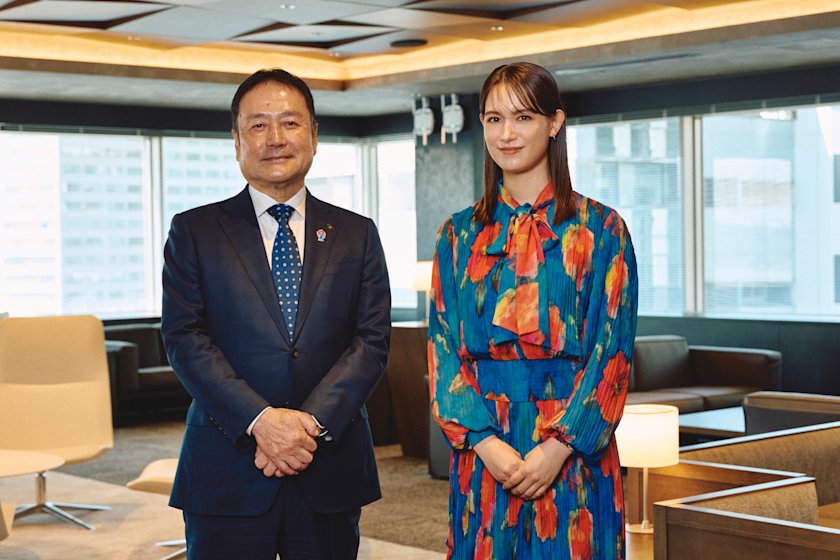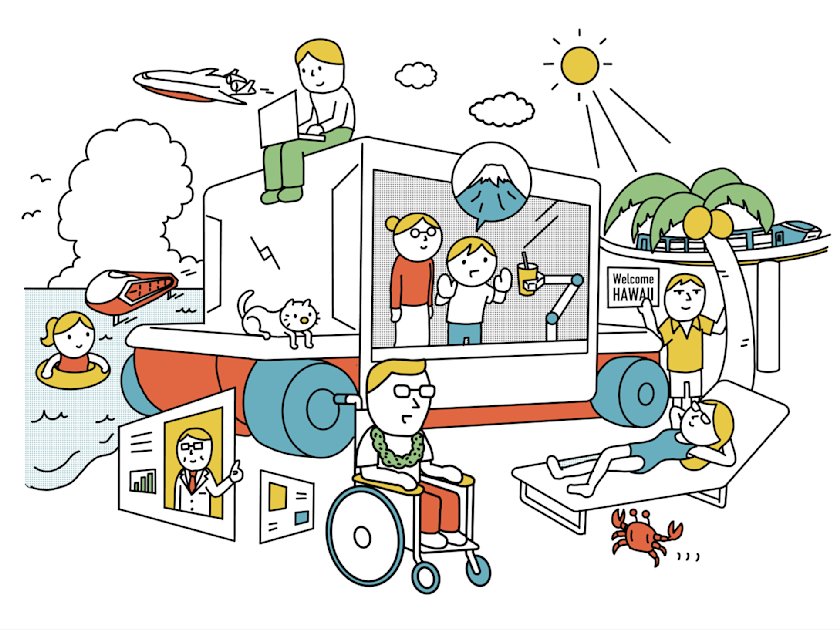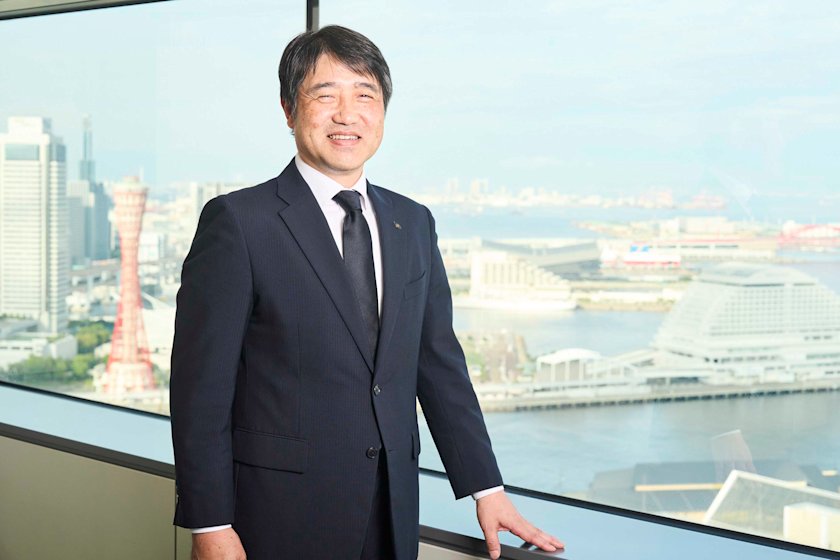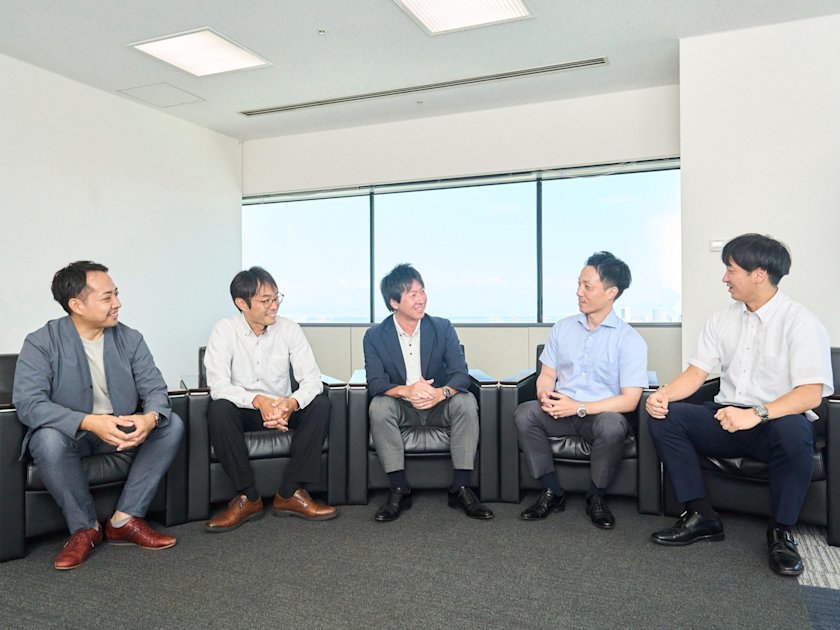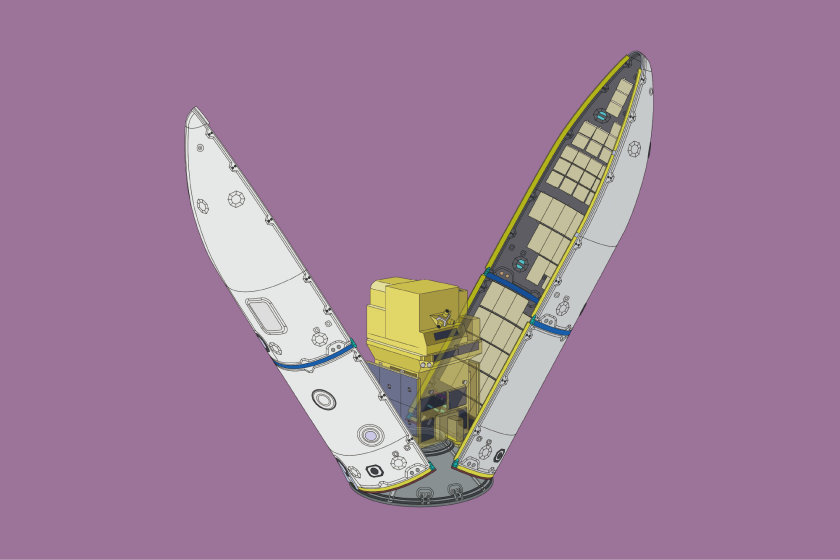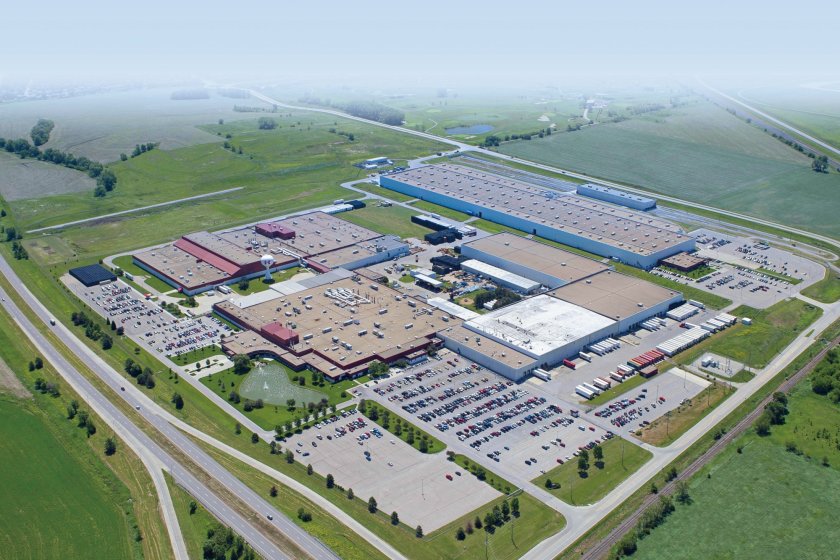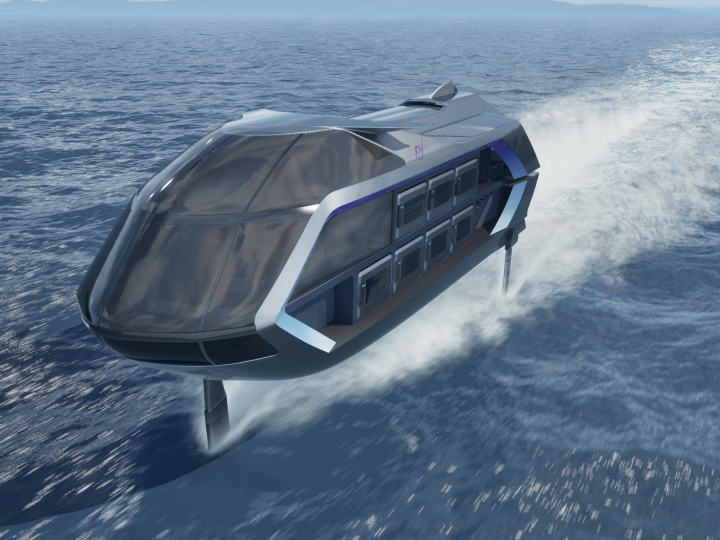At Expo 2025, Kawasaki is exhibiting CORLEO and the ALICE SYSTEM, novel concepts of futuristic mobility that are powered by hydrogen. So what kind of future is the Company picturing with regard to this new source of energy? And what are the strategies of a group that has already established the world’s first hydrogen supply chain to systematically manage a range of processes for “production, transportation & storage, and utilization”?
This article reports on a conversation between Chairman of the Board of Kawasaki Heavy Industries Yoshinori Kanehana, who also served as a Co-Chair of the Hydrogen Council, and model and TV personality Naomi Trauden, who appears in the Kawasaki Hydrogen College video series.
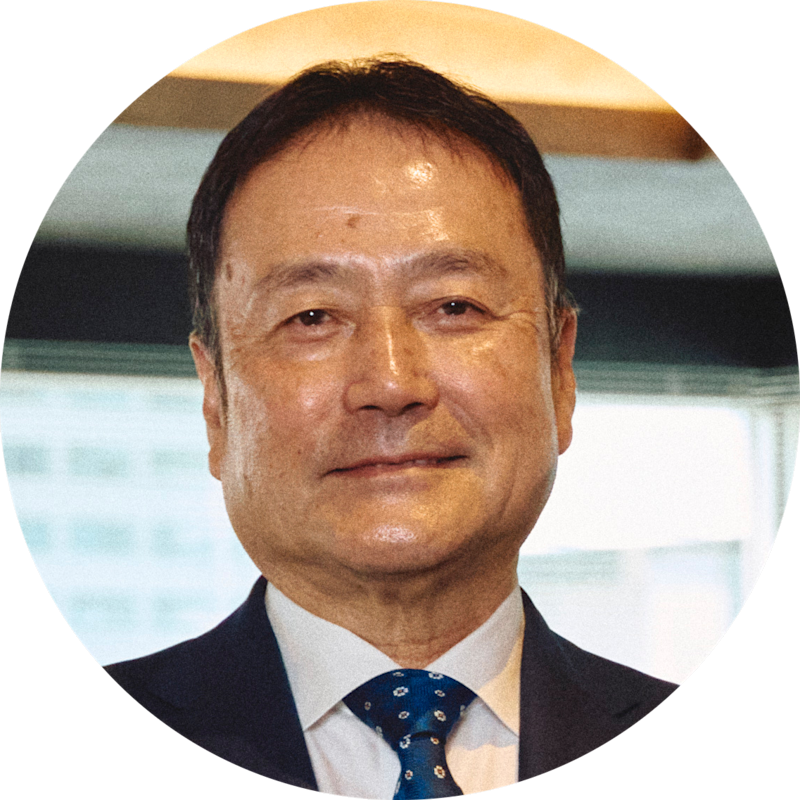
Born in Hyogo Prefecture. Joined the company in 1976 and assumed the current position in 2021. Served as a Co-Chair of the Hydrogen Council for two and a half years from 2022.

Kawasaki brand ambassador
Born in Kyoto Prefecture. Known for her environmental advocacy, appearances on news programs and a raft of other activities related to environmental issues. Amateur equestrian dressage rider.
Expo 2025, a showcase of technologies and future visions

Several days ago, I went to Expo 2025 and visited Kawasaki’s exhibition of CORLEO and the ALICE SYSTEM. It was my first world exposition experience, and I felt overwhelmed by the tremendous atmosphere of exaltation at the venue.

CORLEO is generating a lot of buzz around the world. We have been receiving a lot of inquiries from people who can’t believe it really performs the way it does.

I was immediately enthralled by CORLEO. It fired up my passion for equestrianism.


Expo 2025 is the second world expo that I have experienced in person, following the one held in Osaka in 1970. As a high school student, I visited that event many times, around ten or so, and enjoyed putting my English skills to work chatting with foreign pavilion staff. In those days, there were still very few opportunities for many Japanese people to have contact with foreign cultures. I felt like the expo contained everything that existed in the world.

What is it that particularly stands out in your memory?

There are many such things, like waiting in line for two hours to get a look at the lunar rock, riding the moving walkway, and being fascinated by the wireless telephone. I was awed and wowed by a variety of exhibits presenting the most advanced technologies of the time, most of which are standard and ordinary today.
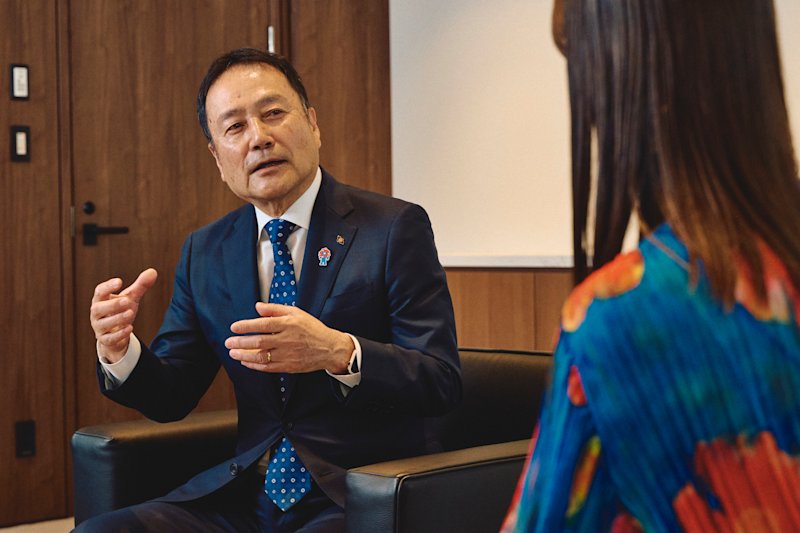

It makes a difference to visit the venue and look at everything firsthand.

Exactly. That’s especially true for young children, who should be a particularly important target visitor group. In light of this, Kawasaki’s booth is designed to provide exhibits in full-scale dimensions, hoping to inspire children’s interest.
CORLEO and the ALICE SYSTEM, future mobility concepts for 2050 that are designed to be powered by hydrogen, a carbon-free energy source

How did you find our exhibits?

I was impressed by the ALICE SYSTEM, a concept to provide a means of public transportation that is universally inclusive and borderless, and thus accessible to many different types of passengers. There are some people who enjoy the process of transferring as part of the fun of traveling, but quite a few others will appreciate the availability of transfer-free systems as a friendlier mode of transportation. I hope this is a realistic model that will be implemented to provide a new transportation option in the future.

The ALICE SYSTEM has been developed by making full use of technological concepts built by Kawasaki to provide mobility solutions to all areas of land, sea and air transportation. The system is designed to fit into a future environment assumed to be available by 2050, but we see a possibility of it being adopted sooner.
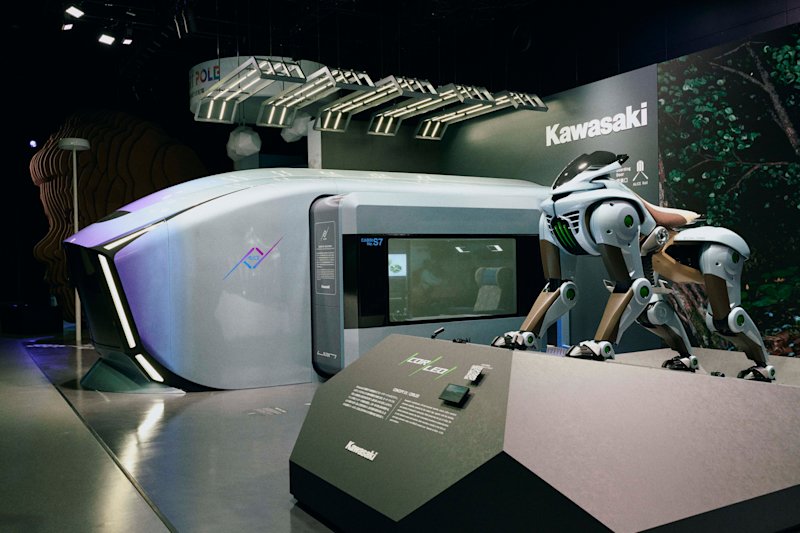

CORLEO was another wow. Specifically, I was awestruck by its tire-free design, made possible by the adoption of a four-legged structure, which is a novel concept for an off-road personal vehicle. I also noted the project’s underlying environmental consideration of trying to avoid the damage that can be caused by building roads. And I like the inclusive design, which allows all types of passengers to enjoy the experience of being in nature. As for functionality, the intuitive operability, which is instinctive, is strongly appealing to me as an enthusiastic horse rider.

First and foremost, CORLEO is an embodiment of Kawasaki’s “Fun to Ride” philosophy for motorcycle manufacturing. At the same time, it is also committed to safety. At present, although commercialization plans are yet to be determined, we are looking at the possibility of providing an effective disaster-relief capability. This would be backed by the hydrogen power mechanism that includes a function to refuel by simply replacing the hydrogen tank, which means no need for separate refueling facilities.

That’s great. That could dispel fears about running out of power, a major concern associated with EVs. Such a tank-based refueling system can give riders peace of mind.
Quiet but steady worldwide movement toward a hydrogen-powered economy

Let me give you a quick quiz. What percentage of the universe do you think is made up of hydrogen?

Well,…I don’t know.

Today, hydrogen is estimated to account for 90% of all atoms in the universe. So we can say that everything in the universe originated from hydrogen and it is the ultimate source of energy. The Hydrogen Council, which I co-chaired until last year, is the world’s first global initiative related to hydrogen energy. It started with 13 companies at the time of its establishment and its membership has grown to around 140 currently. A number of world-famous large companies have participated in the initiative to take on a shared commitment to promoting the use of hydrogen as an energy source.
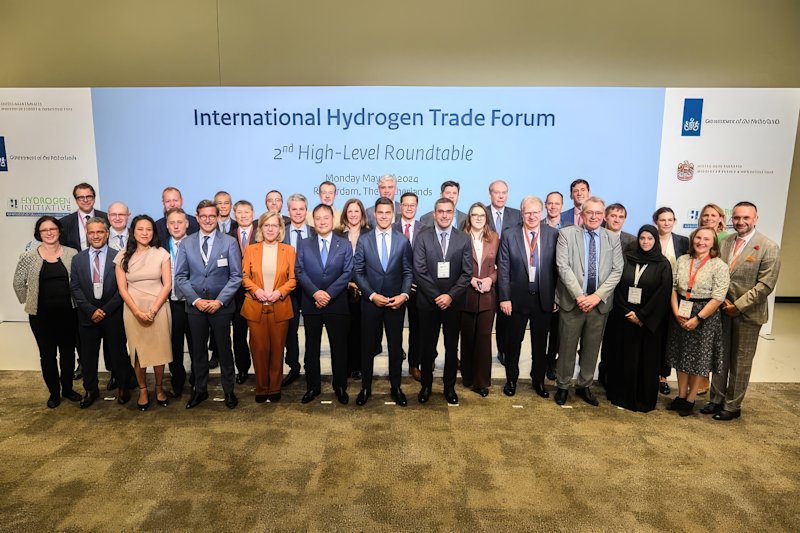

Hydrogen-powered buses have recently begun to appear in many cities.

Those transport services employ a high-pressure hydrogen system (using compressed hydrogen gas), which has a different process to that used to support our planned mobility models based on liquified hydrogen (gaseous hydrogen cooled to one eight-hundredth of the original volume). In order to promote the use of hydrogen as a new energy source, it is essential to achieve energy cost parity, or grid parity, which is the state in which the alternative energy source can generate power at a cost that is less than or equal to that of the conventional electricity grid. Mobility is viewed as the most promising sector in this light.
We have started carrying out actions for this purpose, including the MOU concluded last year with Daimler Truck, a German auto manufacturer, for building a liquid hydrogen supply chain. This agreement has important implications in Europe, which is aiming to reduce CO2 emissions from new vehicles to zero by 2035, as it helped burnish Kawasaki’s reputation based on its distinctive hydrogen supply chain.

I understand. We are currently in a transition period to new energy sources and, in a bid to expand the usage of hydrogen in particular, the world is striving to achieve grid parity, starting with the mobility sector, the most promising area.


Another hopeful sector in terms of grid parity is steelmaking. H2 Green Steel, based in Sweden, is aiming to lower the price of its high-cost steel products produced using hydrogen reduction by taking advantage of government subsidies. This tactic is not very successful as yet, but the situation is likely to change due to the Carbon Border Adjustment Mechanism (CBAM), which will impose a carbon tariff on imports from countries with weak environmental regulations and will take effect in the EU from 2026. Implementation of the CBAM will increase import costs to the EU, which is expected to enable H2 Green Steel to utilize the carbon tariff and government subsidies in combination in order to achieve grid parity.

Such programs aim to incentivize the utilization of hydrogen.

Right. The Hydrogen Council is endeavoring to create such incentive programs and mechanisms, and Kawasaki is planning to offer technical support for these efforts.
Kawasaki seeking a bright and hope-filled future

We are witnessing the start of a new era of hydrogen power, as you have just described. We are also facing climate change that seems to be uncontrollable. I can see how truly important it is for people to be working together to create a sustainable future.

Climate change is the essential target of decarbonization initiatives. In addressing this issue, we should note an important suggestion emerging out of the Gaia theory, introduced by the British scientist James Lovelock. The theory is characterized by its proposition that the Earth is a huge, single living system equipped with self-regulating functions. Within this context, climate change can be seen as an immune response activated by the homeostatic mechanism of the Earth to fend off the “external” threat stemming from human activities. This view urges us to think and act ethically, being aware of ourselves as a component of a single living whole and working humbly to take responsible actions.

The way I see it, we humans should better appreciate the benefits we receive from the Earth and work to give something back. I will think about what I personally can do to help such endeavors. At the same time, governments and businesses in many countries need to pool their wisdom, experience and capabilities in order to build a society that is less of a burden on the Earth. In light of this, in what way is Kawasaki aiming to create a hydrogen-powered society?

We will start by focusing on the mobility sector, looking to reduce costs in response to growing demand with a view to expanding the availability of hydrogen energy to many other sectors. We are not aiming at a hydrogen-dominant society. Rather, we anticipate a situation where hydrogen will be one of many CO2-free clean energy sources available to be chosen according to specific needs. My expectation is that hydrogen-powered airplanes and ships will appear by around 2050.

I’m sure such future vision will come true, given that many of the technologies on display at the expo half a century ago have been adopted for real-life applications.

What is it like in the future vision you have as a responsible citizen of society?

I want to see young people—my children’s and my grandchildren’s generations—looking forward to the future. While we are inundated with information that tends to make us feel uneasy about what’s in store for us, it’s important to note how many people are acting to create a prosperous future. We should hold out hope for the progress of technology, aiming to create a forward-looking society.
